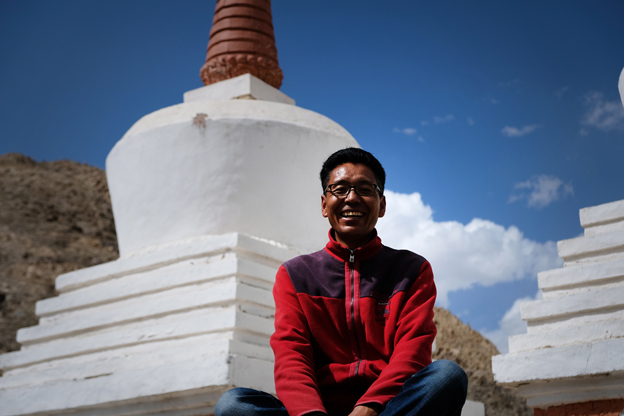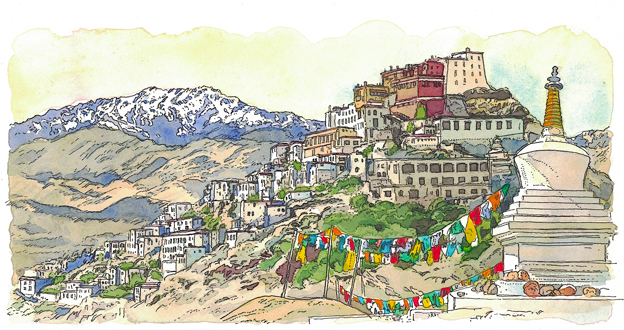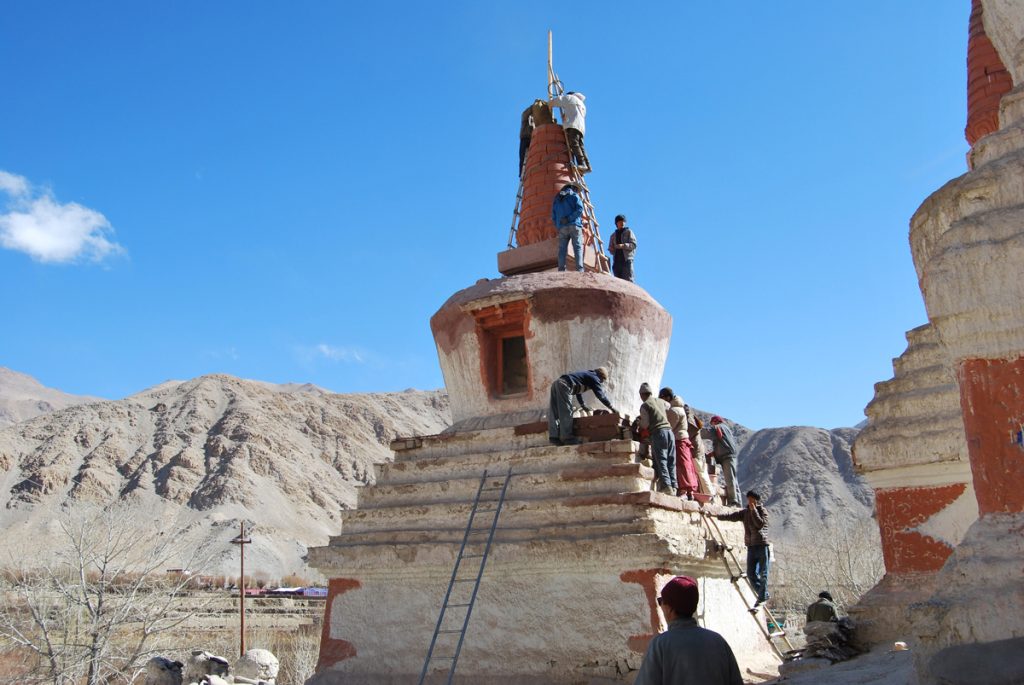In the “Stainless Beam Sutra,” a set of instructions and mantras found in the Tibetan canon, the Buddha teaches that all one needs to purify negative karma is to see a stupa, hear the sound of its bell, or be touched by its shadow. Four to five thousand of these sacred structures, recognizable by their dome-like base and tiered spires, dot the mountains of Ladakh in India’s northernmost state, Jammu and Kashmir, which is home to a significant number of Tibetan Buddhists.
But despite their importance, these religious sites have fallen into grave disrepair because of climate change, rainfall, globalization and development, general neglect, and limited knowledge regarding their upkeep. Scores of stupas in Ladakh desperately need a fresh coat of paint and a facelift; in recent decades, their tapering steps, pinnacles, and central wooden beams have all but collapsed.
When Dr. Sonam Wangchok, director of the Himalayan Cultural Heritage Foundation (HCHF), founded this NGO back in 2009, there was only one stupa architect left in Ladakh.
“Tsering Tundup was in his nineties,” Wangchok said, adding that the nonagenarian hadn’t shared his expertise with anyone else until HCHF made the request.

Rehabbing stupas in Ladakh is one of the many conservation projects that HCHF has started, and it’s one of their most successful. In the last few years, 40 of these monuments, representations of the Buddha’s enlightened mind and body (jokingly called “ancient security cameras” for the “all-seeing” Buddha eyes that are often painted on them), have been restored by 16 local masons trained by Tundup before his death in 2014.
Because many of the stupas are believed to house physical remains of the Buddha and other great masters, monks must deconsecrate the sites before any construction can begin. Once restoration work is complete, monks then lead a consecration ceremony that is usually followed by a community celebration.
Ladakh’s museum-grade reliquaries and houses of worship are considered to be among the finest and oldest in the Buddhist world and attract a steady stream of pilgrims and tourists to the region each year, which worries preservationists. This concern goes all the way to the top: during a recent visit to “Little Tibet,” the Dalai Lama urged Ladakhis to restore these historic structures before building new ones.
“Our heritage is our identity,” Wangchok said.
STUPAS IN A NUTSHELL
Definition: A monument, originally in the shape of a hemispherical mound, that contains the bodily relics or possessions of the Buddha or a revered teacher
Average cost to repair: 50,000–100,000 Indian rupees ($700–$1,400)
Time it takes: 7–12 days
Stupa symbolism: The white dome represents the earth; the spires’ 13 tiers, the stages a practitioner must pass through on the path to Buddhahood
Also called: Thupa (Pali), chaitya (Sanskrit); chorten (Tibetan), shelita (Chinese)
Other objects you might find inside: Scrolled texts; a vase full of auspicious objects such as mantras or medicines; weapons for protection; miniature clay models of stupas called tsa tsas
World’s tallest stupa: At nearly 400 feet, Phra Pathom Chedi in Thailand
♦

Tricycle Travel
Next June, combine travel and Buddhist practice on an 11-day pilgrimage to the ancient Buddhist kingdom of Ladakh.
Located in the Tibetan plateau in the present-day Indian district of Jammu and Kashmir, Ladakh offers one of the last glimpses of traditional Tibetan culture.
From June 17-28, 2019, Tricycle pilgrims will stay at a historic monastery’s guesthouse, participate in pujas with resident monks, receive talks on Buddhist philosophy, and explore the region’s soaring desert landscape with Dr. Sonam Wangchok.
Space is limited to 12, so don’t wait to reserve your spot.
Thank you for subscribing to Tricycle! As a nonprofit, we depend on readers like you to keep Buddhist teachings and practices widely available.
